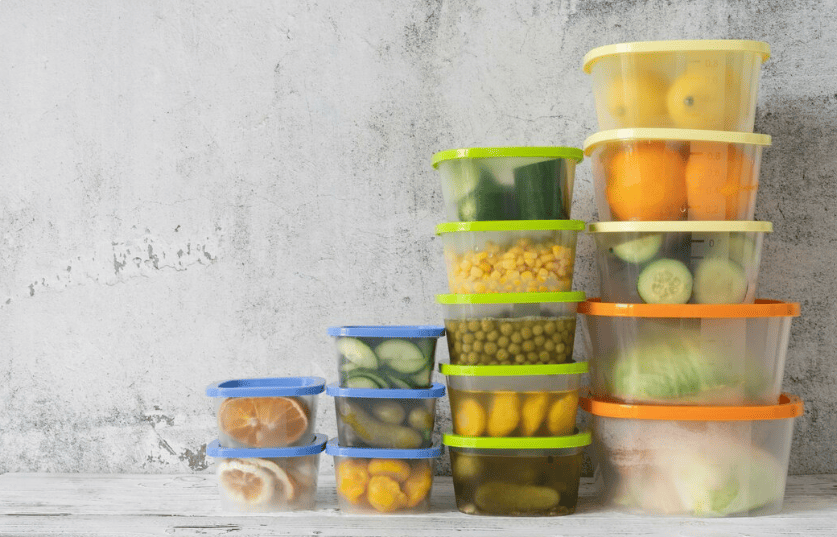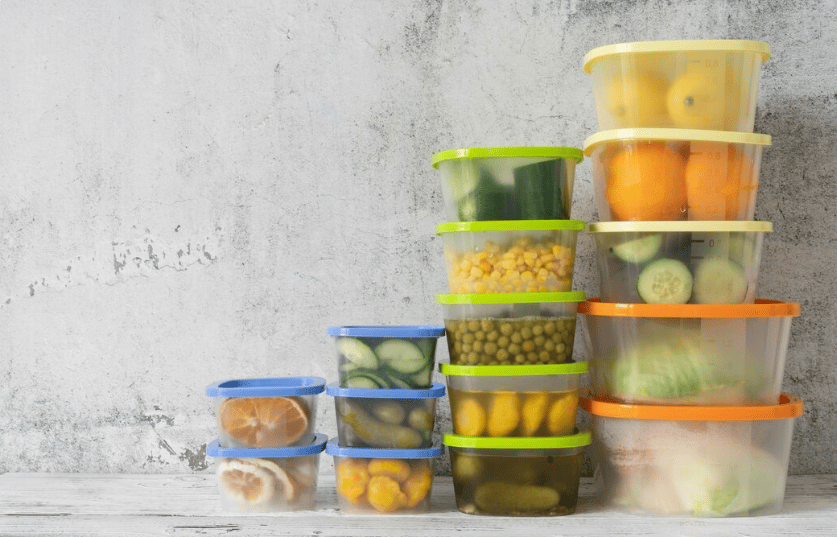Are Chinese plastic food storage bags safe? Discover how to choose BPA-free, food-safe bags, avoid harmful chemicals, and explore safer alternatives like reusable snack containers for your kitchen
Plastic bags provide unparalleled convenience when it comes to food storage. They are a popular option for arranging ingredients in the kitchen, freezing leftovers, and packing lunches because they are affordable, lightweight, and portable. Chinese-made plastic food storage bags are particularly popular among these because of their affordability and widespread availability, both online and in physical stores.
We will dissect the safety issues, point out what to look for, and offer safer substitutes in this guide. By the end, you’ll understand how to select plastic food storage bags that preserve your food and your health without compromising on price or ease of use.

1. Understanding Plastic Food Storage Bags
Plastic food storage bags provide a straightforward and efficient method of storing, safeguarding, and preserving food, making them a necessary appliance in many kitchens. Millions of households worldwide use these bags every day for everything from packing snacks for work or school to freezing leftover meals. But it’s crucial to realize that not all plastic bags are made equal and that a number of variables can greatly affect how safe they are.
Composition of the Material
One of the most important factors in determining safety is the type of plastic used. Certain plastics might include dangerous substances like phthalates, BPA (Bisphenol A), or PVC (polyvinyl chloride). Particularly if the bags are exposed to heat or greasy foods, these chemicals may seep into the food. For instance, storing fatty meats in inferior plastic or heating a bag in the microwave can both raise the possibility of chemical contamination. It is strongly advised to use bags free of phthalates and BPA for everyday use.
Purpose of Use
There are specific uses for plastic bags. Generally speaking, bags marked for freezing or refrigeration are more robust and safe than ones meant for microwave or general storage. When a bag is used for a purpose other than what it was designed for, like heating a bag that isn’t safe for the microwave, it can deform and leak chemicals, which could contaminate your food.
Accreditations
Looking for official food safety certifications is one of the simplest ways to guarantee safety. Seek out bags that fulfill EU food safety regulations, have FDA approval, or are LFGB certified. Tests have been conducted on certified bags to ensure that, under typical use circumstances, no dangerous chemicals are released into food. Always pay close attention to the packaging and select goods that are clearly labeled as food-safe.
2. Are Chinese Plastic Food Storage Bags Safe?
Depending on the brand and manufacturer, the safety of plastic food storage bags manufactured in China can vary greatly. Even though a lot of Chinese producers make excellent, food-safe bags, some might take shortcuts to save money, which could be harmful to your health. Prior to selecting a product for everyday use, it is essential to comprehend these distinctions.
Manufacturer-Specific Quality Variations
One of the world’s biggest manufacturers of plastic food storage bags is China. From high-end, BPA-free bags used in homes and restaurants to inexpensive, unregulated bags offered in large quantities online or at local markets, the selection is extensive.
Premium brands: These adhere to global food safety regulations and frequently offer certifications like FDA, LFGB, or EU food safety approvals. They make sure that no dangerous chemicals seep into food by using plastics that are free of BPA and phthalates.
Low-quality brands: These might use inexpensive plastics or additives to save money, which can cause toxins to be released when the bag comes into contact with food, particularly hot or fatty foods.
✅ Safe Option Features
Look for items that include the following to guarantee the security of plastic food storage bags made in China:
Materials free of phthalates and BPA can be dangerous if consumed.
Certified for food use – FDA, LFGB, or EU certifications guarantee the bag has passed strict safety tests.
High-quality bags made of thick, long-lasting plastic are robust, tear-resistant, and leak-proof.
Depending on the manufacturer’s instructions, safe bags can also be frozen, refrigerated, and occasionally microwaved.
Signs of Unsafe Plastic Food Storage Bags
Not all plastic food storage bags are made equal, and utilizing unsafe or subpar bags can endanger your health and jeopardize the safety of your food. The following are the main red flags to look for when choosing plastic bags, particularly those manufactured in China:
1. Include Dangerous Substances
The presence of harmful chemicals like BPA, phthalates, or PVC additives is one of the main hazards associated with inexpensive plastic bags. Especially if the bag is used with hot, greasy, or acidic foods, these substances may seep into the food. It can be challenging for customers to recognize dangerous options because these dangerous chemicals are frequently not prominently labeled on the packaging.
2. Easily Tear or Break
Low-quality bags are more likely to tear or puncture easily, increasing the possibility of spills, leaks, and cross-contamination. A ripped bag poses a major hygienic risk since it can allow bacteria from raw meats or leftovers to infect other foods in your refrigerator. To avoid such mishaps, sturdy, thick plastic is necessary.
3. Unable to Handle Heat or Cold
When exposed to extremes of temperature, plastic bags that are not made for freezing or microwaving may warp, melt, or release dangerous chemicals. It is dangerous and may jeopardize the quality and safety of food to use these bags for hot soups, freezer storage, or reheating leftovers.
For a safer and more sustainable alternative, consider using reusable containers like the Snackle Box Container, which are BPA-free, durable, and ideal for storing snacks and meals safely.
3. Tips to Ensure Safety When Using Plastic Food Storage Bags
It takes awareness, careful handling, and quality control to use plastic food storage bags safely. The following useful advice will help you safeguard your food and well-being:
1. Check Labels and Certifications
Before purchasing any plastic food storage bags, always read the packaging carefully. Look for official certifications such as:
- FDA (U.S. Food and Drug Administration)
- LFGB (German Food and Feed Law)
- SGS or EU Food Safety Approvals
These certifications show that the bag has undergone safety testing and doesn’t release dangerous chemicals into food when used normally. Since their quality and safety cannot be guaranteed, stay away from generic or unbranded bags that don’t have any information about food safety.
2. Do Not Reuse Single-Use Bags
A lot of inexpensive plastic bags are made to be used just once. It may be dangerous to reuse them because:
If the bag was used for perishable goods, raw meat, or fish, bacteria may grow in it.
Over time, chemical leaching may worsen, particularly if the bag is exposed to hot or greasy foods.
Instead, consider reusable options, such as stackable, BPA-free containers, which are safer and more durable. For example, the Snackle Box Container is ideal for safely storing snacks and meals every day.
3. Properly Store Food
Food safety and freshness depend on proper storage:
To avoid cross-contamination, keep raw meat apart from fruits, vegetables, and cooked foods.
Unless the bag is marked microwave-safe, stay away from high heat. Extreme temperatures may be too much for even certified bags to handle.
To keep track of storage time and lower the chance of spoiling, label and arrange your food.
You can reduce health hazards and maximize the use of plastic food storage bags without sacrificing food safety by adhering to these guidelines.
For a safer and more durable option, consider using reusable snack containers like the Snackle Box Container on Amazon. Its sturdy compartments and secure lid make it perfect for keeping snacks fresh, organized, and safe from contamination—an ideal alternative to single-use plastic bags.

